Friday, 27 November 2020
SPARROWHAWK!
Saturday, 21 November 2020
SCAUP TRIO AT FARMOOR
For a number of reasons including a temporary change of hours at school, plus a visit from a heating engineer, I've not been out this week until today. It was a mostly grey day with a brisk south westerly wind blowing when I headed over to one of my regular birding sites at Farmoor Reservoir. I'd been reading a number of reports of several Greater Scaup on the reservoir which were associating with some tufted ducks not too far from the western end of the causeway which divides the two reservoirs. As I parked, I noticed the orange wind sock blowing horizonally which indicated that I would be heading into the wind as I crossed the causeway. I felt in my pockets for my hat and gloves, which thankfully were there in readiness.
There were several groups of tufted ducks visible on F1, and I scanned them with my binoculars to see if I could pick out any female Scaup with their white blaze. Another lady told me that she thought she could find one that was sleeping but it was difficult to identify it. I thought I could see the one she meant although there were another few ducks asleep as well. I decided to continue across the causeway to see whether I could find any other birds of interest or indeed anything else that looked like a Scaup. As I got to the corner I did spot what could be the possible immature male Scaup which had also been reported - I'm always grateful to photographers who add their pictures to the Oxon birding blog, as it helps me check the birds I am trying to identify! . I turned to walk a little way along the western bank of F1 but there appeared nothing that resembled the birds I was looking for. However, l did see a couple of kestrels perched on the Thames Water building.
Returning across the causeway, this time with the wind behind me, I noticed a couple of photographers focusing on one of the groups of tufted ducks. I quickly realised that they had found the two female scaups, which had obviously been the sleeping birds I'd seen earlier! Both had their white flash showing well, though the different colouring of the birds showed they were of different ages - according to one birder's report they were probably first and second winter birds.
I took a few photos before returning to my car to enjoy a flask of hot chocolate which I had brought with me in the car to warm me up after my walk!
Tuesday, 10 November 2020
A CROSSBILL BONUS
One of my aims this winter was to find some crossbills; these are birds that I've never seen before but from time to time can be seen locally though I've not managed to see any myself
The earliest opportunity I expected to have was Thursday this week as I generally work Mon - Wed. However, yesterday I was informed that my class bubble at school was having to self isolate for 14 days and I would be working from home, though without the need to completely self isolate as I hadn't been in school at the end of last week.
As a result, I decided to take the opportunity to see if I could find the crossbills at lunch time today. They had been seen in some conifer trees which lined a bridle way leading to a farm, just off the A420. I soon found the location but the only parking I could find was on the opposite side of the road outside a gated entrance so I hoped I wasn't going to upset anyone by parking on their property! Looking down the drive/bridleway I could see a few people with binoculars looking up at one of the trees a 100 yards or so away. On reaching them I found a couple with cameras plus a couple of ladies who told me they lived there and were enjoying all the interest that the birds ' presence had generate!. They also reassured me that it was a public bridleway so we were not trespassing in any way! The crossbills were easy to spot,in branches half way to two thirds the way up the the tree and often at the outer edges although their colours ( red males and green females) blended in quite well with the pine cones and leaves respectively. I was very pleased to spend a while watching them use their specially shaped beaks to extract the seeds from the cones. There were at least half a dozen, maybe quite a lot more, mostly males, (I only spotted one female) On enquiring I learned that the crossbills seemed to have selected that particular tree and were returning to it regularly.
Saturday, 7 November 2020
STAYING LOCAL(ISH) DURING LOCKDOWN NO 2
The start of the new lockdown coincided with my days off this week and some beautiful autumn sunshine. I had fully intended to pay a visit to Slimbridge on Thursday, but sadly that is closed for the moment, I therefore headed for some more local sites. At Stanton Park, on Friday, I was surprised to find the car park almost full, even at 10 o'lock in the morning. However, it is a large area and I had little difficulty in finding a quiet spot next to some a bird feeding station, which some thoughtful person had filled with a range of food.. No sooner, had I sat down on one of the wooden benches, when I saw my first bird table visitor, a marsh tit. Gorgeous little birds, but in common with other members of the tit family, they don't hang about for long, but grab a seed and fly off with it.
Next to visit was another of my favourite woodland birds,a nuthatch, followed by coal tit, blue tit and great tit. A robin and blackbird also made an appearance as did a couple of grey squirrels. I stayed a while, for a time, being joined by another couple who sat, at a suitable distance on one of the other seats, before taking another path back towards the car park.
I'd been reading on the local Oxfordshire birding blog of a juvenile great northern diver that was currently visiting Farmoor Reservoir so as this bird was not yet ticked off on my year list I decided to make the half hour trip today to go and find it. After a rather cold, murky start to the day, it was brightening up and with little or no wind, I thought the water would be calm enough to take some photos if it was near enough to the bank.
With lockdown in progress I thought, rather naivily that it might be quite quiet there, but no, I was wrong, the car park was full, and many people were taking advantage of the autumn sunshine, including families, joggers, anglers as well as photographers and birdwatchers.
The diver was located in an area of water on the eastern side of F2 which meant only a short walk from the car park (for a change!|) There were a few photographers seated on the wall, and they pointed out the bird to me. It was a fair distance from the bank, but easy to spot on the calm water and obtain a few photographs. Amongst the chat between the birders/photographers I recognised the voice of my cousin, Jon, so joined him ( socially distanced of course) for a chat and subsequent walk across the causeway.
The usual birds were present, great crested and little grebes, cormorants, herring and blackheaded gulls, mute swans and mallards and the usual good numbers of coots.
Monday, 2 November 2020
BUTTERFLY SIGHTINGS SUMMARY 2020
In the middle of May we were at last permitted to visit places further afield, and it was time to do some serious catching up on the butterflies which I would normally have seen by now. I therefore headed over to my usual hot spot at Oakley wood near Cirencester for Pearl bordered Fritillaries followed by a visit to Rodborough Common where I clocked up seven more species ; duke of burgundy, small heath, dingy skipper, brown argus, small blue, adonis blue and common blue .The following day I visited Morgan's Hill and ticked off Marsh Fritillary, grizzled skipper ( my first for several years!) and small copper. I felt my year list would be reasonable after all!
It is always good to add a never seen before butterfly to my year list, and I decided this year I would target the small pearl bordered butterfly. Having tried unsuccessfully to find it in previous years at various locations ( usually being either too late or too early in the season) I decided my best chance was to travel down to Priddy Mineries in Somerset after reading some reports of sightings in the area. My visit paid off, even to the extent of having one land on my camera bag, and I was able to add species number 51 to my personal records list.
With the end of May approaching, a further visit to Morgan's hill yielded a single green hairstreak and my first large skipper and meadow brown of the year.
A revist to Bucknell woods in mid July, this time to meet my sister, enabled us to find purple hairstreaks and ringlets but sadly no more wood whites, as it is between broods. No purple emperors either. A week later I added chalk hill blues to my list from a visit to Lardon Chase, on the way to visit my daughter who had also just discovered she has purple hairstreaks visiting her garden from an old oak tree at the back of her garden.
By the end of July, brown hairstreaks were already on the wing and I made my customary visit to RSPB Otmoor to find some. I had also been seeing plenty of gatekeepers about.
A conifer plantation at Mortimer, in early August gave me my usual grayling record, although I only saw two this time, and during a visit to Labrador Bay looking for cirl buntings, I spotted several wall browns, an unexpected bonus from the visit.
.
TEMMINCK'S STINT AND YELLOW BROWED WARBLER AT SLIMBRIDGE
After a journey, somewhat lengthened by traffic and road closures, I arrived at Slimbridge shortly after opening time, where I was hoping to...

-
I read a blog recently which suggested that the hawfinches at Parkend were really not worth visiting, as the area is so busy with dog walk...
-
With a morning set aside for some birding while I was staying in Kent, I decided to focus on seeing species that I don't normally see ...
-
My original plan for today was to make another trip to the New Forest but after a rather busy week, and a weather forecast which kept ...








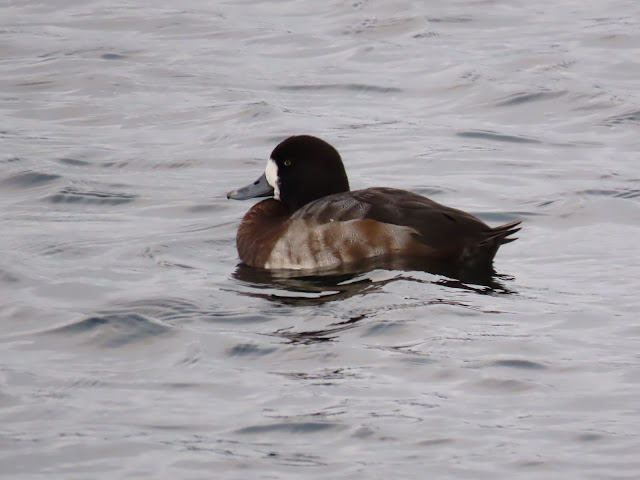



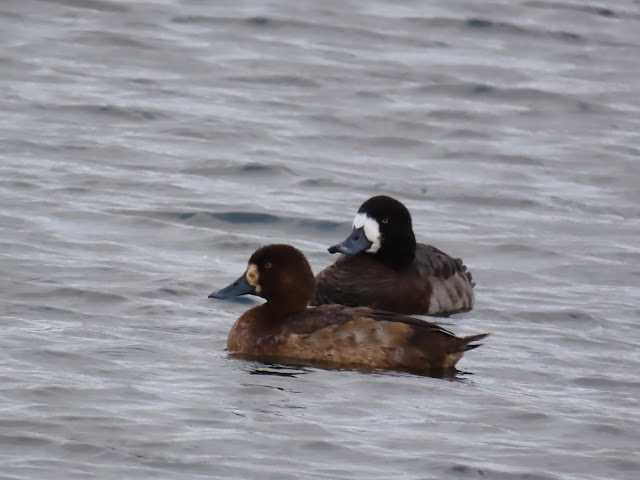




















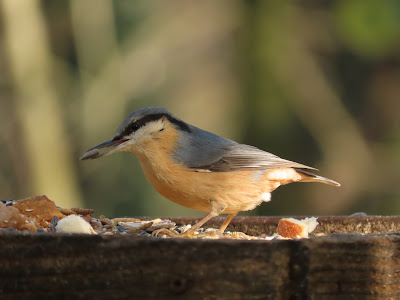

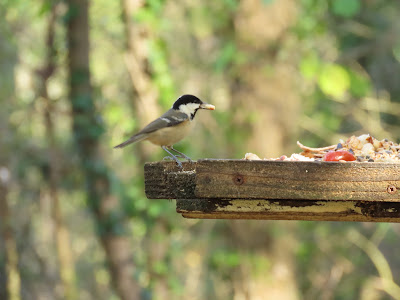











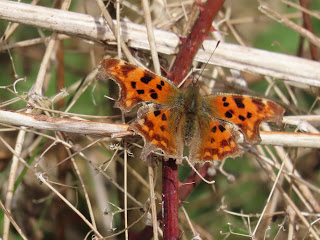
































.JPG)
